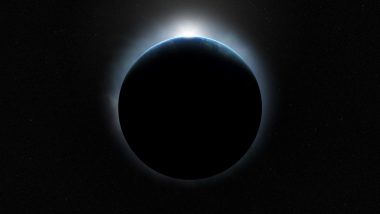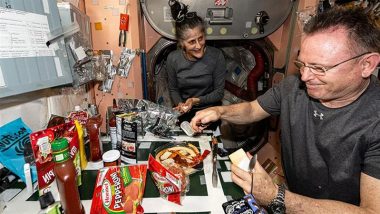Washington, February 4: 'Super-Earth', a planet that could harbour life has been identified by the US space agency NASA. This planet is reportedly 137 light-years away from us. In a press statement, the space agency announced, "A 'super-Earth' ripe for further investigation orbits a small, reddish star that is, by astronomical standards, fairly close to us - only 137 light-years away. The same system also might harbour a second, Earth-sized planet." Named TOI-715 b, the planet is about 1.5 times wider than Earth and orbits within the "conservative" habitable zone around its parent star, which may mean that liquid water might eventually exist on the planet's surface, according to NASA. It takes just 19 days to complete one orbit, or one year.
A red dwarf, which is smaller and colder than the Sun, is circled by the planet. Similar to this instance, NASA said that some of these stars are believed to be home to "small, rocky worlds." Scientists Discover New Planet 'EPIC 211945201' 600 Light Years Away at Mount Abu Observatory.
"Several other factors would have to line up, of course, for surface water to be present, especially having a suitable atmosphere. But the conservative habitable zone - a narrower and potentially more robust definition than the broader 'optimistic' habitable zone - puts it in prime position, at least by the rough measurements made so far. The smaller planet could be only slightly larger than Earth, and also might dwell just inside the conservative habitable zone", the statement read.
The new planet was discovered by the Transiting Exoplanet Survey Satellite (TESS). Because an orbit takes less time to complete, astronomers are better able to identify and investigate the planet. Two Suns in New Solar System? 'Tatooine' Star System Discovered for the Second Time, Star Wars-Like Planets More Common Than Scientists Previously Thought!
These planets make far closer orbits than those around stars like our Sun, but because red dwarfs are smaller and cooler, the planets can crowd closer and still be safely within the star's habitable zone. The tighter orbits also mean those that cross the faces of their stars - that is, when viewed by our space telescopes - cross far more often, the statement added. The features of the planet will play a major role in the space agency's plans to examine it with the James Webb telescope.
(The above story first appeared on LatestLY on Feb 04, 2024 05:56 PM IST. For more news and updates on politics, world, sports, entertainment and lifestyle, log on to our website latestly.com).













 Quickly
Quickly




















